 Miss Amelia's List (Elemental Masters Book 17) by Mercedes Lackey
Miss Amelia's List (Elemental Masters Book 17) by Mercedes Lackey Format: eARC
Source: supplied by publisher via NetGalley
Formats available: hardcover, ebook
Genres: regency fantasy, fantasy, historical fantasy
Series: Elemental Masters #17
Pages: 336
Published by DAW on December 24, 2024
Purchasing Info: Author's Website, Publisher's Website, Amazon, Barnes & Noble, Kobo, Bookshop.org, Better World Books
Goodreads
The seventeenth novel in the magical alternate history Elemental Masters series follows Amelia Stonehold and Serena Meleva as they navigate property acquisition, marriage proposals, and other ancient horrors in Regency England, but with the help of elemental magicThe year is 1815, and an American, Miss Amelia Stonehold, has arrived in the Devon town of Axminster, accompanied by her "cousin" Serena Meleva. She’s brought with her a list to tick find a property, investigate the neighbors, bargain for and purchase the property, staff the property and...possibly...find a husband. But Amelia soon finds herself contending with some decidedly off-list trouble, including the Honorable Captain Harold Roughtower, whose eyes are fixed on her fortune. Little does Amelia know that his plans for her wealth extend far beyond refurbishing his own crumbing estate — they include the hidden Roman temple of Glykon, where something very old, very angry, and very dangerous still lurks. But Roughtower isn’t prepared to reckon with the fact that neither Amelia nor Serena are pushovers. And he certainly isn’t ready for the revelation that he has an Earth Master and a Fire Mage on his hands — or that one of them is a shapeshifter.
My Review:
Miss Amelia’s List is a lovely and charming story that will especially appeal to Jane Austen lovers who occasionally wish there was just a bit more actual magic in her stories – but do not want to go nearly as far as Pride and Prejudice and Zombies.
I’m pretty sure the above requires a bit of explanation. Maybe even more than a bit.
Amelia Stonehold and her cousin Serena Meleva arrive in London from the former – definitely and definitively former – American colonies in 1815. To set the historical stage, the War of 1812 was settled by treaty in December of 1814 – which means that some people are still a bit salty about it on both sides of the Atlantic. Jane Austen has published her first three novels, Sense and Sensibility, Pride and Prejudice, and Mansfield Park, under the pseudonym, ‘A Lady’. The Regency period is in the fullest of its flower. Napoleon is still in his first exile on Elba and has not yet ‘met his Waterloo’ and made that phrase into a cliché.
 While this entry in the Elemental Masters series is number 17 in publication order, this series of magical retellings and reinterpretations of classic myths, legends, tales and historical events has not been published in ANY chronological order. The previous book in the series, The Silver Bullets of Annie Oakley, is set in the late 19th century. Annie Oakley wasn’t even born until 1860 – long after the events of Miss Amelia’s List take place.
While this entry in the Elemental Masters series is number 17 in publication order, this series of magical retellings and reinterpretations of classic myths, legends, tales and historical events has not been published in ANY chronological order. The previous book in the series, The Silver Bullets of Annie Oakley, is set in the late 19th century. Annie Oakley wasn’t even born until 1860 – long after the events of Miss Amelia’s List take place.
Which, by a roundabout route, leads us back to Amelia and Serena by way of Jane Austen. I put it that way because Amelia’s and Serena’s introduction to the Regency reads very much like the ‘comedy of manners’ style of Austen. Or at least like Austen if Austen knew about magic.
While Amelia’s and Serena’s perspectives on Regency society are very much informed by their ‘colonial’ origins, the realities of life in a new world, and the existence of magic and their significant powers within it, their story, and the events in which they participate and/or are excluded from is very similar to the world Austen described in such loving detail.
Which means that a large portion of Miss Amelia’s List is, in fact and told in a much more lively fashion, about the list of things that Amelia Stonehold has come to England to accomplish, and about the progression of Amelia and Serena through the highly structured but often ridiculously stratified and stultifying ‘society’ in which they must play an exacting part in order to get things done.
It’s fun, it’s charming. It’s occasionally teeth gnashing but because of Amelia’s and Serena’s outsider perspectives that teeth gnashing is shared by the characters. They know the so-called ‘rules’ are OFTEN ridiculous while knowing they must at least appear to conform, so the reader is in charity with them when some high-stickler makes an ass of themselves in their presence – or behind their backs.
But it’s not a story of action – in spite of the blurb. (Yes, I know, I’ve not been ‘in charity’ with a lot of blurbs in the last few weeks.) Miss Amelia’s List is utterly charming, a delightfully well told Austenesque ‘comedy of manners’, but there’s not a lot of excitement. At least, not until the very end.
An ending which includes death, dismemberment, big snakes and small helpers, as well as a happy ever after that appropriately differs for each and every character.
Escape Rating B: Miss Amelia’s List is a story that I truly enjoyed while I was in it. Howsomever, right up until the very end I didn’t feel any compulsion to find out what happened next, because there’s not really a lot happening at all.
Amelia, surprisingly so for being an Earth Master in this particular magic system, is rather like a duck or better yet, a swan, seeming to float effortless on top of the water – or all the various social situations to which she of necessity must adapt – while paddling furiously under the water DOING all that adapting.
Which is where I circle back to Austen’s comedy of manners style, as a LOT of what Amelia does is observation and then tailoring her behavior to what she’s observed. She may be extremely ruffled on the inside – and in fact often is – but she must appear decidedly UNruffled at all times, which she does.
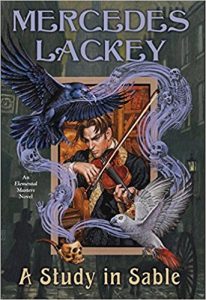 So not a lot happens because it’s her ‘job’ in effect to make sure that it seems like not a lot is happening. Even if, or especially because, the reality is that a lot is getting done. Which again, gets back to the story being charming and lovely and a delight to sink into much like a warm bath, BUT not exactly a page-turner.
So not a lot happens because it’s her ‘job’ in effect to make sure that it seems like not a lot is happening. Even if, or especially because, the reality is that a lot is getting done. Which again, gets back to the story being charming and lovely and a delight to sink into much like a warm bath, BUT not exactly a page-turner.
You might very well be looking for something EXACTLY like this amidst, or after, the holiday bustle. I absolutely enjoyed my read of it and hope that the Elemental Masters series eventually returns to the setting and some of the characters of Miss Amelia’s List.
After all, finding a husband for Miss Amelia herself was explicitly NOT on her list. Maybe it will be if we have the chance to see her again. If you like the concept of the Elemental Masters, but want a story that’s a bit more of a page-turner, you might want to try either The Silver Bullets of Annie Oakley or the Sherlock Holmes subseries – my personal favorite – that begins with A Study in Sable.

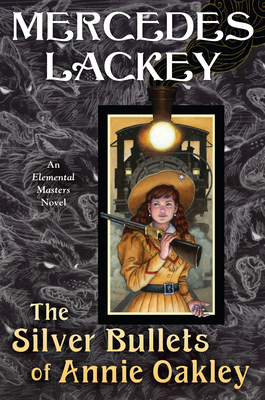 The Silver Bullets of Annie Oakley (Elemental Masters, #16) by
The Silver Bullets of Annie Oakley (Elemental Masters, #16) by 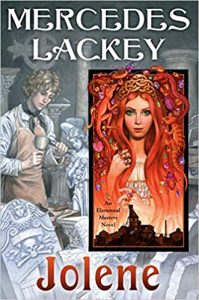 The Wolves – whose identity has never been conclusively determined – starved her, cheated her, threatened her and physically and mentally abused her at every turn for two years, beginning when Annie was nine years old.
The Wolves – whose identity has never been conclusively determined – starved her, cheated her, threatened her and physically and mentally abused her at every turn for two years, beginning when Annie was nine years old.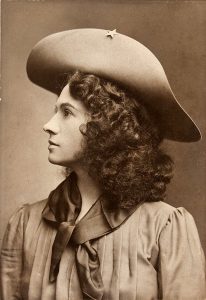
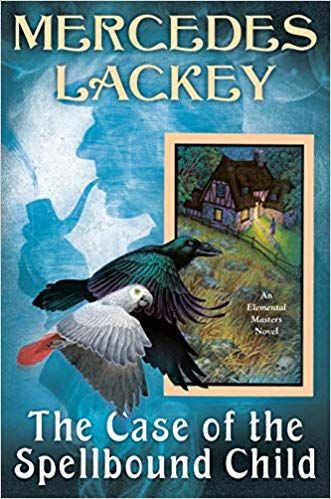 The Case of the Spellbound Child (Elemental Masters, #14) by
The Case of the Spellbound Child (Elemental Masters, #14) by 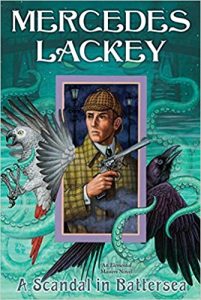 Escape Rating B+: If you look carefully at the background image in the book cover, you’ll recognize the silhouette of the famous detective, complete with pipe and just the suggestion of a deerstalker cap. It does lead one to believe that there will be more of Holmes than actually occurs in this case. On the other hand, there’s plenty of Watson, or rather, Watsons in this one, as the Wizard of London has tasked the Watsons with a case that he finds more important than the locals seem to.
Escape Rating B+: If you look carefully at the background image in the book cover, you’ll recognize the silhouette of the famous detective, complete with pipe and just the suggestion of a deerstalker cap. It does lead one to believe that there will be more of Holmes than actually occurs in this case. On the other hand, there’s plenty of Watson, or rather, Watsons in this one, as the Wizard of London has tasked the Watsons with a case that he finds more important than the locals seem to.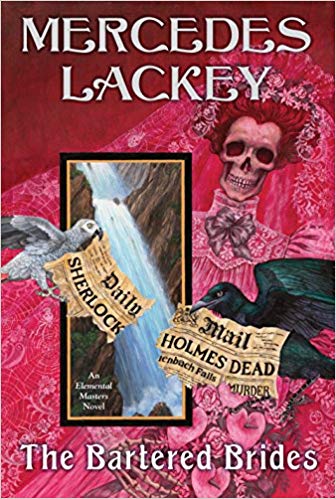 The Bartered Brides by
The Bartered Brides by 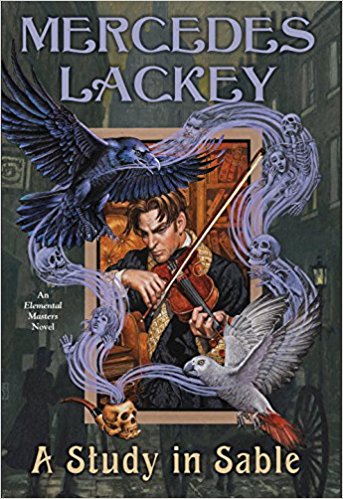 A Study in Sable (Elemental Masters #11) by
A Study in Sable (Elemental Masters #11) by 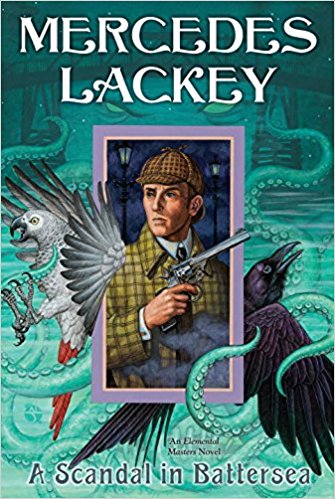 A Scandal in Battersea (Elemental Masters, #12) by
A Scandal in Battersea (Elemental Masters, #12) by